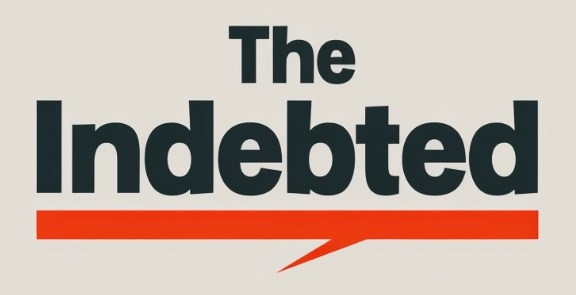Peer-to-peer (P2P) lending is a popular way to borrow money from individuals without going through traditional financial institutions. It is a form of crowdfunding where lenders pool their money together to fund loans for borrowers. P2P lending platforms are gaining popularity as an alternative to traditional lending institutions because they offer lower interest rates and more flexible terms.
If you have accumulated significant debt from credit cards, personal loans, or other high-interest loans, P2P lending can be a debt repayment strategy worth considering. By consolidating your debt into a single P2P loan, you can potentially lower your interest rate and save money on interest payments. This can help you pay off your debt faster and more efficiently.
In this article, I will provide a step-by-step guide on how to use P2P lending as a debt repayment strategy. I will cover the benefits of P2P lending, how to choose a reputable platform, how to apply for a P2P loan, and how to use the loan to pay off your debt. By the end of this article, you will have a clear understanding of how P2P lending works and how it can help you get out of debt.
Understanding Peer-to-Peer Lending
The Basics of P2P Lending
Peer-to-peer (P2P) lending is a way for individuals to lend and borrow money directly without the involvement of traditional financial institutions like banks or credit unions. Instead, borrowers are matched with investors who are willing to lend them money. P2P lending platforms act as intermediaries between borrowers and investors, handling the logistics of the loan and providing a platform for borrowers and investors to connect.
One of the main benefits of P2P lending is that it often allows borrowers to access loans at lower interest rates than they would be able to get from traditional banks. This is because P2P lending platforms have lower overhead costs than banks, and they are able to pass those savings on to borrowers in the form of lower interest rates.
Comparing P2P to Traditional Lending
When comparing P2P lending to traditional bank lending, there are a few key differences to consider. First, P2P lending is typically faster than traditional bank lending. Borrowers can often get approved for a loan more quickly through a P2P lending platform, and the funds can be deposited into their account more quickly as well.
Another difference is that P2P lending often has lower fees than traditional bank lending. Banks often charge origination fees, prepayment penalties, and other fees that can add up over the life of a loan. P2P lending platforms, on the other hand, typically charge lower fees, if any at all.
Finally, P2P lending can be a good option for borrowers who have been turned down for loans by traditional banks. P2P lending platforms often have more flexible lending criteria than banks, and they may be willing to lend to borrowers who have less-than-perfect credit.
Overall, P2P lending can be a good option for borrowers who are looking for a way to access loans at lower interest rates and with lower fees than they would be able to get from traditional banks. However, it’s important to do your research and understand the risks before you decide to use a P2P lending platform.
Preparing to Use P2P Lending for Debt Repayment
If you’re considering using peer-to-peer (P2P) lending to repay debt, it’s important to make sure you’re prepared before you start the application process. Here are a few things to consider before you begin:
Assessing Your Financial Situation
Before applying for a P2P loan, it’s important to assess your financial situation. This includes taking a look at your income, expenses, and debt. You should have a clear understanding of your debt-to-income ratio, which is the percentage of your monthly income that goes toward paying debt. A high debt-to-income ratio can make it difficult to qualify for a loan.
It’s also important to check your credit report and credit score. P2P lenders typically require a good credit score, although some lenders may accept borrowers with less-than-perfect credit. If your credit score is low, you may want to work on improving it before applying for a loan.
Understanding Qualification Requirements
Each P2P lending platform has its own qualification requirements. Some platforms require a minimum credit score, while others may have a minimum income requirement. It’s important to read the qualification requirements carefully before applying for a loan.
In addition to qualification requirements, it’s also important to understand the terms of the loan. This includes the interest rate, repayment period, and any fees associated with the loan. Make sure you understand all of the terms before accepting the loan.
By assessing your financial situation and understanding the qualification requirements, you can increase your chances of being approved for a P2P loan and ensure that you’re prepared to repay the debt.
The Process of Securing a P2P Loan
As someone who has used peer-to-peer (P2P) lending to repay debt, I can tell you that the process of securing a P2P loan is relatively straightforward. In this section, I will guide you through the two main steps involved in securing a P2P loan: choosing the right platform and navigating the application process.
Choosing the Right Platform
The first step in securing a P2P loan is to choose the right platform. There are several P2P lending platforms available, including Prosper, LendingClub, Upstart, and Funding Circle. Each platform has its own market and loan offerings, so it’s important to research each one to find the best fit for your needs.
One way to compare P2P lending platforms is to look at their loan terms. For example, LendingClub offers loans ranging from $1,000 to $40,000 with terms of 36 or 60 months. Prosper, on the other hand, offers loans ranging from $2,000 to $40,000 with terms of 36 or 60 months. By comparing loan terms, you can determine which platform offers the loan amount and term that best fit your needs.
Navigating the Application Process
Once you have chosen a P2P lending platform, the next step is to navigate the application process. Most P2P lending platforms offer an online application process that can be completed in minutes. To complete the application, you will need to provide personal information, such as your name, address, and social security number, as well as information about your income and employment.
After you have completed the online application, the platform will review your application and determine whether to approve your loan. If your loan is approved, the platform will provide you with the loan terms, including the interest rate and origination fee. It’s important to carefully review the loan terms before accepting the loan to ensure that they meet your needs.
In conclusion, securing a P2P loan involves choosing the right platform and navigating the application process. By researching P2P lending platforms and carefully reviewing loan terms, you can find a loan that meets your needs and helps you repay debt.
Strategies for Debt Repayment with P2P Loans
As a borrower, peer-to-peer (P2P) lending can offer an attractive alternative to traditional bank lending. P2P lending allows borrowers to take out loans directly from individuals or companies offering loans online. Here are some strategies for using P2P loans to repay debt:
Consolidating Multiple Debts
One of the main benefits of P2P lending is that it can be used to consolidate multiple debts into a single loan. Debt consolidation can simplify your finances by combining all of your outstanding debts into one loan. This can help you to manage your debt more effectively by reducing the number of monthly payments you need to make. Additionally, P2P loans often have lower interest rates than credit cards or other high-interest loans, which can help you save money in the long run.
Planning for Timely Loan Repayments
When you take out a P2P loan, it is important to plan for timely loan repayments. P2P loans typically have fixed monthly payments, which means that you will need to make regular payments on time to avoid late fees or other penalties. To ensure that you can make timely loan repayments, it is important to budget for your loan payments and plan your expenses accordingly.
When planning for timely loan repayments, it is also important to consider the loan terms. P2P loans often have shorter loan terms than traditional bank loans, which means that you will need to pay off your loan more quickly. However, this can also be an advantage, as it can help you to pay off your debt more quickly and reduce your overall interest payments.
In conclusion, P2P lending can be an effective strategy for debt repayment. By consolidating multiple debts into a single loan and planning for timely loan repayments, borrowers can use P2P loans to manage their debt more effectively and save money in the long run.
Managing Risks and Maximizing Benefits
As with any investment, there are risks associated with peer-to-peer (P2P) lending. However, by understanding these risks and taking steps to mitigate them, you can maximize the benefits of P2P lending as a debt repayment strategy.
Understanding the Risks of P2P Lending
One of the primary risks of P2P lending is default. While P2P lending platforms often have measures in place to reduce default rates, it is still important to be aware that there is a possibility of losing some or all of your investment. It is important to carefully consider the creditworthiness of borrowers before investing in their loans.
Another risk to consider is interest rate risk. Interest rates can fluctuate, which can impact the returns on your P2P lending investments. It is important to keep this in mind when selecting loans to invest in and to diversify your portfolio to minimize the impact of interest rate fluctuations.
Tips for Successful Investing in P2P Lending
To maximize the benefits of P2P lending, it is important to take steps to mitigate the risks. Here are some tips for successful investing in P2P lending:
- Diversify your portfolio: By investing in multiple loans, you can reduce the impact of defaults and interest rate fluctuations on your overall returns.
- Carefully consider loan amount and interest rate: It is important to carefully consider the loan amount and interest rate before investing in a loan. Higher interest rates may offer higher returns, but they also come with higher risk.
- Understand the borrower’s creditworthiness: Before investing in a loan, it is important to carefully consider the borrower’s creditworthiness. This can help you identify loans that are more likely to be repaid on time.
- Monitor your investments: It is important to regularly monitor your P2P lending investments to ensure that they are performing as expected. This can help you identify any issues early on and take steps to mitigate them.
By following these tips and carefully considering the risks associated with P2P lending, you can maximize the benefits of this debt repayment strategy and achieve your financial goals.





